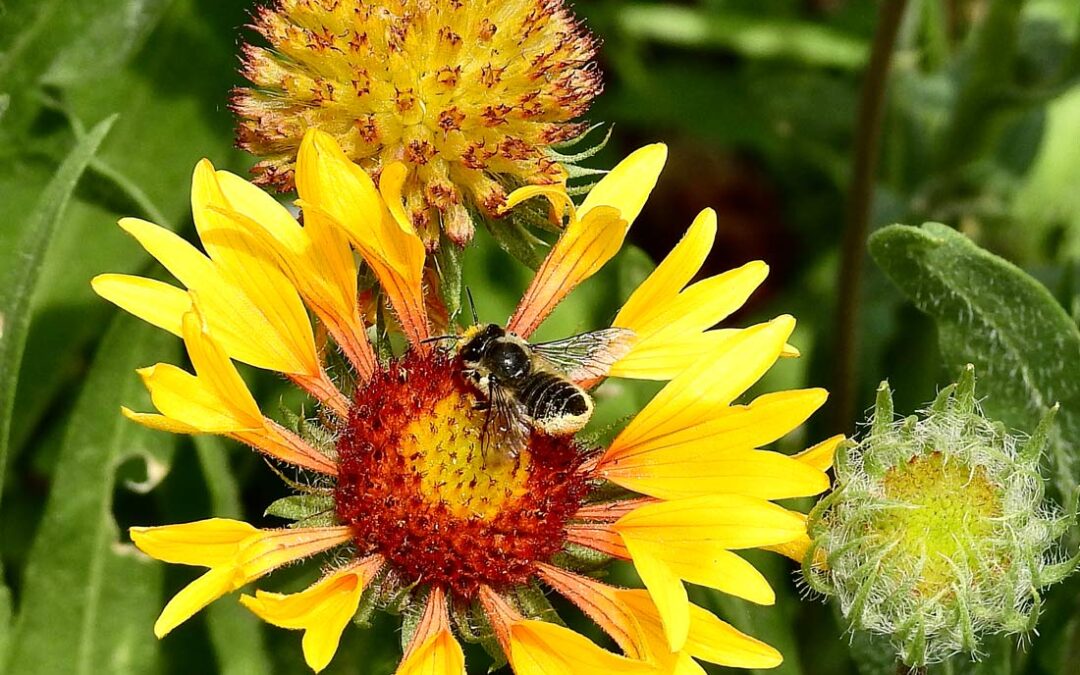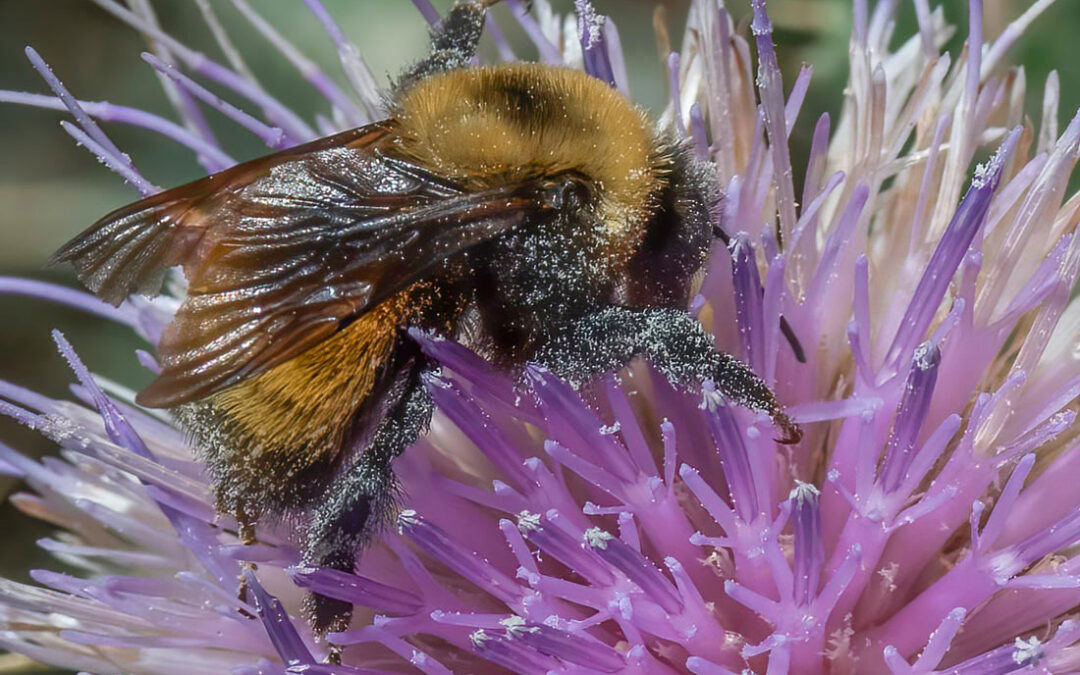

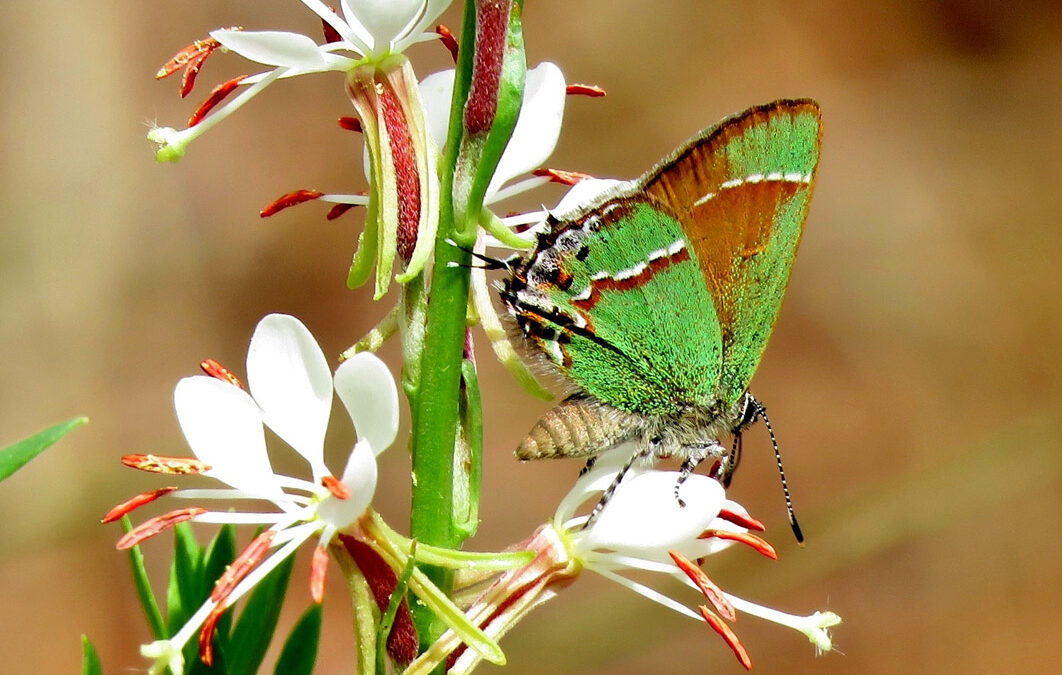
2023 Photo Contest, 3rd Place Plants and Wildlife Category
2023 Photo Contest, 3rd Place Plants and Wildlife Category: “Oenothera suffrutescens with Callophrys gryneus butterfly”. Photo by David Rudin. Scarlet Bee Blossum (Oenothera suffrutescens), in the Evening Primrose Family (Onagraceae) is native and common...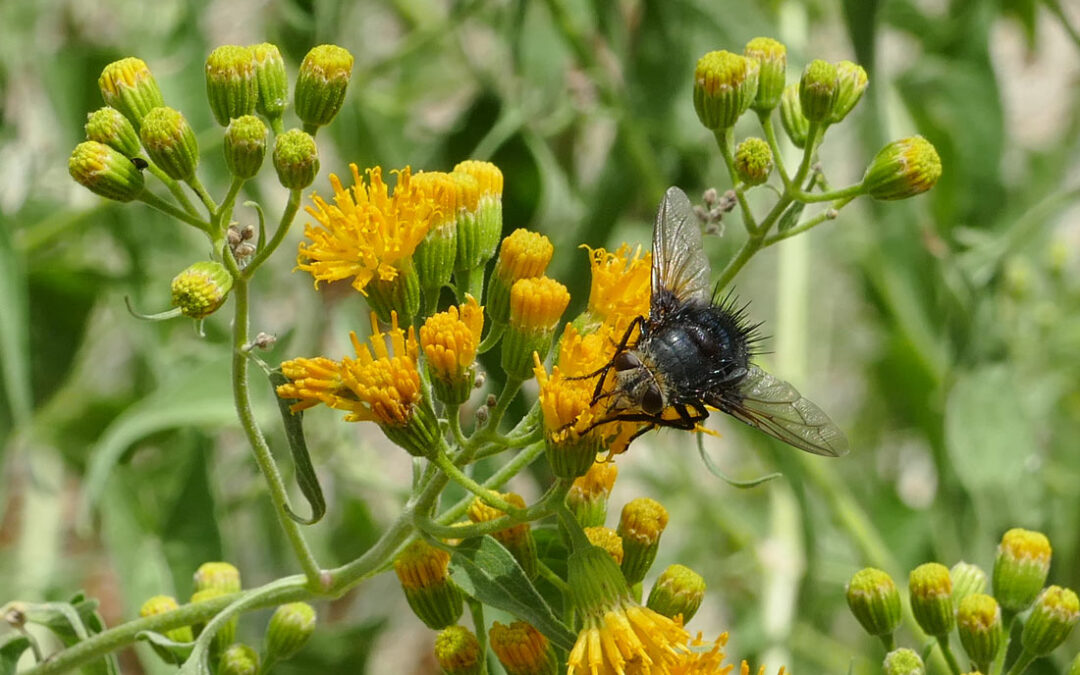
Tachnid Fly (Jurinopsis adjusta) and Pericome (Pericome caudata)
Pericome (Pericome caudata), in the Aster Family (Asteraceae), is found on open, rocky hillsides, from the plains to the montane on the eastern and western slopes. It blooms from August through October. Tachinid Flies are covered in spiky black hairs. This species has...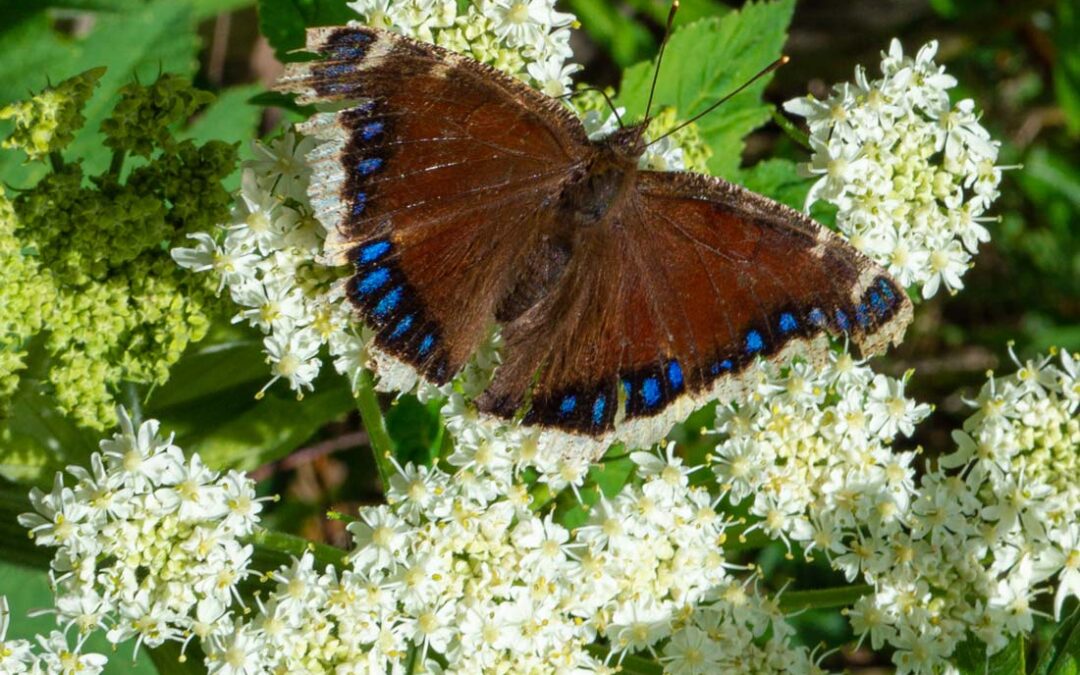
Mourning Cloak Butterfly (Nymphalis antiopa)
The Mourning Cloak Butterfly (Nymphalis antoipa) hibernates in the winter and mates in the spring, the males perching in sunny openings until they attract a female. They prefer oaks, cottonwoods and aspens, laying their eggs on the leaves in webs. The caterpillars...